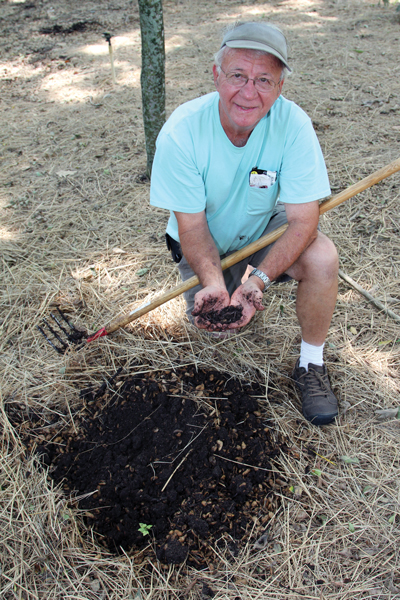Worm Farm Wiggles Its Way Across The Southeast

Sitting in an office with shipping orders, distribution routes and old notes taped to the wall, Bobby Reeder takes a sip from his Diet Coke before telling the story of the Geneva County earthworm farm his late grandfather started.
“He started domesticating a local worm called the wiggler—or Alabama jumper—in the early ‘40s,” Reeder said. “It was a big, active worm that released an odor when punctured, and the fish seemed to like it. He started making beds and raising wigglers in conditions conducive to growing.”
That was the foundation for Four R Farms in Slocomb, which developed a process Reeder and his family still use. Starting with a shaded area of sandy, loose soil, a mulch of peanut hulls or hay is worked into disked dirt. An irrigation system is added, followed by another layer of mulch before Reeder or his two brothers, Tony and Eugene, add young worms that are the foundation of the new worm crop.
“Then we start feeding and watering,” Reeder said, smiling. “You have to water every day it doesn’t rain. We’ll feed once, maybe twice a week or until you can’t see the feed mix on top of the soil anymore.”
The worms are fed a protein mix and occasionally some old produce. Worms are harvested four to six times a year and sold throughout the south—from Texas to North Carolina.
“We started by selling to fishermen, and then over time we branched out to bait shops,” Reeder said. “Then bait shops started making what we call jobber routes, where a truck loads bait and goes from bait shop to bait shop. Normally we’re about two steps removed from the fishermen.”
For many fishermen, a worm and cane pole introduced them to the sport. In Alabama, freshwater fishing had an economic impact of $780 million in 2011, according to a survey by the Alabama Department of Conservation and Natural Resources. The survey showed 683,000 anglers fish in Alabama (69 percent were residents, 31 percent were non-residents).
Reeder credits the bait business with helping the farm’s initial success, but after earning a doctorate in plant physiology at Texas A&M, he diversified the farm to make it stronger.
Previously, the 32-acre farm pumped out 250 million to 500 million worms, but that number dropped as the farm expanded its variety of products.
“Initially we were farmers and fish bait people,” he said. “I put in a nursery in 1980, and now that makes up about 30 percent of our business—and it’s growing.”
Even the worms pitched in to help the nursery grow. Castings (or casts) are the excrement of earthworms. Castings help aerate the soil and improve its overall structure while providing beneficial nutrients to plants.
The worm farm is a popular tour spot, including a recent visit by a group from Litchfield, Minnesota, involved in the Sister City Exchange Program with Hartford, Alabama.
With Hartford a short ride from Four R Farms, the worm farm has been part of the exchange tour for almost 20 years, said William Birdsong.
“The tours expose our northern guests to different aspects of the agricultural economy in south Alabama,” said Birdsong, an Extension specialist and Hartford-Litchfield Sister City Committee member. “Tour attendees are very interested in what’s involved in an earthworm farm. They find it intriguing.”
